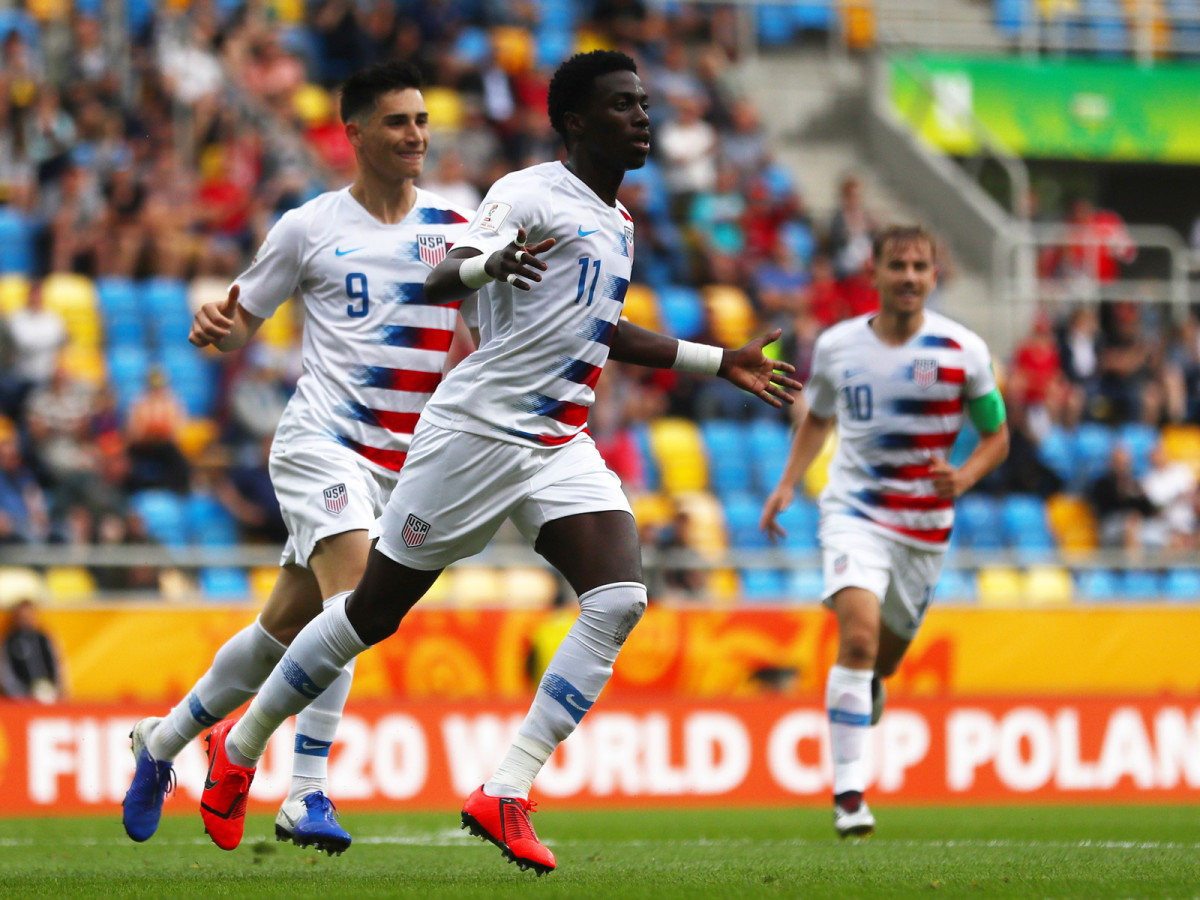As With Every Youth World Cup, It's About What Happens Next

For a third straight FIFA U-20 World Cup, the USA is out in the quarterfinals. It's disappointing, especially for a group that's among the most talented the U.S. has ever had at this competition. There's understandable sadness for the players who fell short of their goal. But, in terms of the big picture, it's never really about the result at this stage.
Youth tournaments are not given predictors of senior national team success. They certainly can have an impact of sorts in future fortunes, but a quick glance at semifinalists in the U-20 World Cup over the last decade reveals a mixed bag. For every Brazil, Argentina, France, Uruguay and England, there's a Mali, Iraq, Hungary, Serbia and Venezuela. Germany, the 2014 World Cup winner, isn't among the bunch. Of France's 2013 U-20 World Cup champions, just four players were part of the senior team's 2018 World Cup triumph, with only two–Paul Pogba and Samuel Umtiti–key contributors to the side. That is to say, translating youth results into senior results is an inexact science.
Of course, winning in any arena is preferred. The USA's first semifinal appearance since 1989 would've been rightly celebrated, although another run to the quarterfinals, especially going through France to get there, is nothing to be upset about–even if elimination at the hands of Ecuador on Saturday may feel like a disappointment. And for the players involved–for all nations–this tournament is another step, not an ending point. What happens next is where the future impact of the individuals involved will ultimately be determined.

For Tim Weah, who flashed glimpses of his talent and scored the USA's goal on Saturday, can his club situation be sorted so he can further his development? Another year like the one the 19-year-old winger just had–sitting out most of the first half at PSG and having mixed results at Celtic–probably isn't going to cut it in order to efficiently accelerate his growth.
For Hannover's Sebastian Soto, the USA's leading scorer (four goals), and Chris Gloster, the starting left back, what does the future hold? They both may reportedly leave their relegated German club, with Dortmund said to be eyeing the former. Both displayed promising performances that indicate bright futures in what are needs areas for the senior team.
For Bayern Munich center back Chris Richards, will there be a forthcoming path to the first team, especially as veterans Mats Hummels and Jerome Boateng appear to be making way? Or will continuing to feature for the club's youth team be sufficient in growing his profile?
For Paxton Pomykal, one of the rising midfield stars in MLS, can he continue building on what's been an otherwise productive start to 2019 at a club that cultivates youth talent as good as any in the USA?
For some of the players who struggled in Poland, like D.C. United midfielder Chris Durkin and Barcelona forward Konrad de la Fuente, will there be pro opportunities and minutes with which to bounce back and find their top form? Or will a failure to turn out with their best wind up being a crippling element that lingers?

These kinds of questions can be asked, in one way or another, of every player on Tab Ramos's team, and of those on every participant in the competition, for that matter. Youth tournaments are excellent tests that are tremendous for exposure–both for the players to face off against some of their most talented peers and for scouts peering through the shop window. They're meant to be stepping stones for all involved. The team results, while they do matter to a degree, are always secondary to what follows.
Olympic qualifying takes place in the fall, and while there are players a year or two older than this current U.S. bunch, you can expect a few of the top U-20 players to force their way into Jason Kreis's side, which is hoping to end the U.S. mens' qualifying woes and reach the Olympic stage for the first time since 2008. If they get there, the situation will be much of the same. Winning will be preferred. Results will matter to the players, coaches and fans. But in terms of the big picture, it's all about how these players continue to develop over time and how quickly–if at all–they're able to reach their top potential at the game's highest level.
